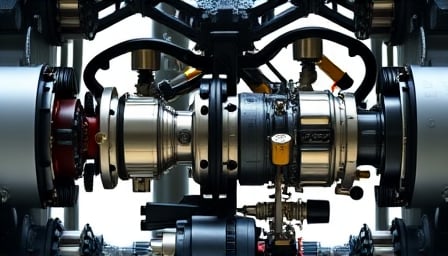Corporate News
General Dynamics Corporation Expands Strategic Alliance with Daimler Truck Holding AG
General Dynamics Corporation (NYSE: GD) has announced a deepened partnership with Daimler Truck Holding AG, the parent company of Daimler AG’s truck and bus division. The expansion is slated to unlock new avenues for joint development of high‑performance propulsion systems, advanced electrification platforms, and integrated digital supply‑chain solutions.
Manufacturing Process Synergies
Both firms will co‑operate on the design, validation, and mass production of power‑train modules that meet the stringent emissions and safety standards of the European and North American markets.
- Integrated production lines: Leveraging General Dynamics’ proven modular assembly techniques, the joint effort will incorporate flexible production cells capable of handling both combustion and battery‑electric variants.
- Lean manufacturing: Adoption of 5S and continuous‑flow principles will reduce change‑over times between platform variants, directly boosting throughput and lowering unit costs.
- Quality assurance: Jointly established statistical process control (SPC) dashboards will monitor critical dimensions (e.g., torque‑to‑weight ratios) in real time, ensuring adherence to the high‑precision tolerances required for heavy‑vehicle drivetrains.
Capital Expenditure and Productivity Metrics
The alliance is expected to spur a capital‑intensive phase of development, with projected investments exceeding $1.2 billion over the next five years.
- Capital allocation: Funds will be directed toward expanding fabrication capacity, purchasing high‑speed robotic welders, and deploying advanced simulation software for drivetrain design.
- Productivity gains: Early projections suggest a 12 % increase in units produced per labor‑hour and a 9 % reduction in defect rates, translating into higher profit margins and improved customer satisfaction.
Technological Innovation in Heavy Industry
The partnership will pioneer several key innovations:
- Hybrid propulsion modules: Combining high‑efficiency internal combustion engines with electric motors to achieve zero‑emission operations in urban freight.
- Digital twin integration: Real‑time monitoring of vehicle performance will be facilitated through cloud‑based analytics, enabling predictive maintenance and reducing downtime.
- Materials engineering: Adoption of advanced lightweight alloys and composites will enhance structural integrity while minimizing curb weight, thereby improving fuel economy.
Economic Drivers and Market Implications
- Regulatory environment: Stricter emissions regulations (e.g., EU‑5, US EPA Tier 4) are accelerating the transition to electrified fleets, creating a favorable backdrop for the joint venture.
- Infrastructure spending: Government commitments to upgrade highway systems and install charging infrastructure are providing a ready market for the new platforms.
- Supply‑chain resilience: By sharing supplier networks, General Dynamics and Daimler can mitigate component shortages, particularly in high‑purity lithium and rare‑earth materials.
Stock Performance and Investor Outlook
Over the past fiscal year, General Dynamics’ share price has risen to a 52‑week high, reflecting market confidence in the expanded partnership. The firm’s market capitalization remains robust, while its price‑to‑earnings (P/E) ratio—though elevated—signals investor optimism regarding future earnings growth driven by the alliance’s commercialization roadmap.
Conclusion
General Dynamics Corporation’s intensified collaboration with Daimler Truck Holding AG exemplifies a strategic response to the evolving demands of the heavy‑vehicle sector. By marrying advanced manufacturing processes, capital‑heavy investment, and cutting‑edge technology, the partnership is poised to deliver significant productivity improvements and capture a growing share of the electrified truck market. The firm’s solid financial footing and favorable market trajectory suggest a resilient trajectory in the coming years.
